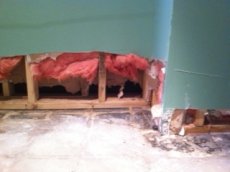How to get rid of furniture fast?
Water in unwanted places can cause a lot of damage. Not only can it ruin your prized possessions, but also the house in which they are stored. If you’re able to act quickly, you can minimize the damage and possibly save some of your possessions. Some of your success depends on how long the water’s been around, there might be pieces of furniture that can be saved, and sometimes, even carpet, but any electronics hit by water are probably doomed.
Don’t treat flood water in unwanted places lightly: even if your basement only has an inch of water in it, or is even just damp, it is the perfect breeding ground for mold. Mold growth not only ruins walls, furniture, carpets, flooring, etc., it can lead to poor indoor air quality causing respiratory problems including asthma, and can lead to severe illness. Preventing mold growth is key to keeping your home’s air clean and healthy. So in addition to calling your insurance company, here are a few tips to deal with your flooded basement and minimize the water damage. (Call your insurance company before you do anything, and tell them what you want to do.)
- Disconnect the power, unplug any electronics, and remove electronics, furniture and movable items immediately. The faster you get items out of water’s way, the more likely you’ll be able to save them. Definitely move all electrical items first, and if you can, turn off your power leading into the affected area, especially if water rises above electrical outlets. Pull up any carpets (wall to wall and area rugs) and underpadding. You may be able to save the carpet if you get it cleaned and disinfected, however, it may shrink and be better off as an area rug afterwards. It’s unlikely you’ll be able to save the underpadding, which acts like a sponge and absorbs a lot of water.
- Get rid of the water. There are several ways to get rid of the water. If you don’t have power, or are worried about loose wires, the old-fashioned, manual way will work. Use old towels, buckets and mops to soak up as much water as possible. As long as sewers in your neighbourhood aren’t backed up, you can pour the water down the drain, otherwise, pour onto your lawn or other permeable surface. A wet/dry vacuum can be used too, note: be very careful to plug it into outlets far away from water. Don’t use an extension cord as the connection could also short out and give you a nasty shock. Water and electricity don’t mix! If your basement or other flooded area is overwhelming and you have power, consider renting (if available) a sump pump from your local Rent-all or hardware stores. Getting rid of all the water and drying out the area is the most important thing you can do to prevent mold growth.

- Dry out the affected area. Once you’ve mopped up all the water, use fans and a dehumidifier to help dry out the area. If it’s stopped raining, open windows to allow for air circulation and faster drying. You want to dry the area out as soon as possible. If you have a finished basement and the drywall was affected, you’ll probably have to cut away the areas that were touched by water as the drywall will crumble and the paper backing is a good source of food for mold. If you have baseboard trim, take it up first, and if it’s made from pressboard it will likely not be salvageable. If it was wood, you might be able to save it.
|
PharMeDoc Bed Wedge Pillow w/ Washable Case – Premium Therapeutic Support for Sleeping, Back & Leg Pain – Layered Memory Foam – Promotes Spinal & Digestive Support (8” – 21” – 24”) Health and Beauty (PharMeDoc)
|
|
|
COLOURLOCK Odour Remover Spray for leather and textiles to remove the smell of mold, smoke, urine and other unpleasant odors from car interiors, furniture, clothing, carpets, rugs, etc - 8.45fl oz Home (Lederzentrum Gmbh)
|
Related posts:





